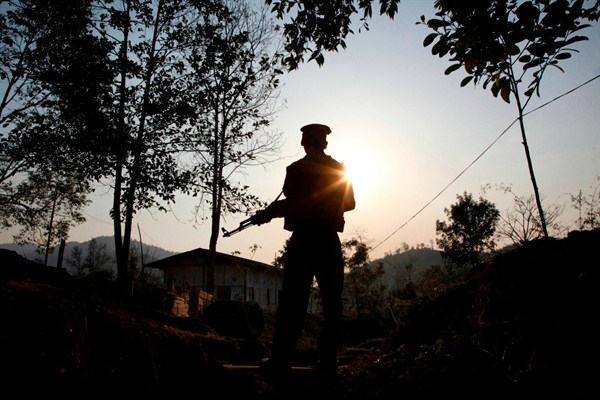As global attention remains fixed on the desperate plight of Rohingya Muslims fleeing ethnic cleansing in Myanmar’s western state of Rakhine, another violent military crackdown has flared almost unnoticed more than 400 miles to the northeast in the remote and mountainous state of Kachin, along the isolated land border with China. Since mid-January, battles between Myanmar’s armed forces, known as the Tatmadaw, and the ethnic rebels of the Kachin Independence Army, or KIA, have intensified in several areas of the resource-rich and historically conflict-wracked region, displacing thousands of civilians.
The surge in violence, with military airstrikes and retaliatory insurgent attacks, has dealt a severe blow to the electoral promises of Aung San Suu Kyi, Myanmar’s de-facto leader, who has attempted to resolve the country’s complex web of ethnic conflicts since assuming civilian power after landmark elections in 2015. Unchecked abuses by the Tatmadaw—first in Rakhine, and now in Kachin—have further damaged Aung San Suu Kyi’s past reputation as a Nobel laureate who championed democracy and defended human rights. Amid her silence over alleged military abuses, her peace efforts have made scant progress; conflict across Myanmar has, in fact, worsened since she assumed office.
Although a smattering of rebel groups with different agendas signed a vague, nation-wide cease-fire with the government in late 2015—with two more joining-up in February this year—the 12,000-strong KIA has not signed and remains one of Myanmar’s most powerful and well-armed rebel groups. The dynamics of the recent violence, which began with a military onslaught against rebel bases near lucrative mining towns, suggest why the conflict in Kachin has been so hard to resolve. Across this rugged land nestled between China and India, and far from the center of state power in Naypyidaw, contests over ethnicity, territory and resources combine to make the insurgency as intractable as any in the world.

